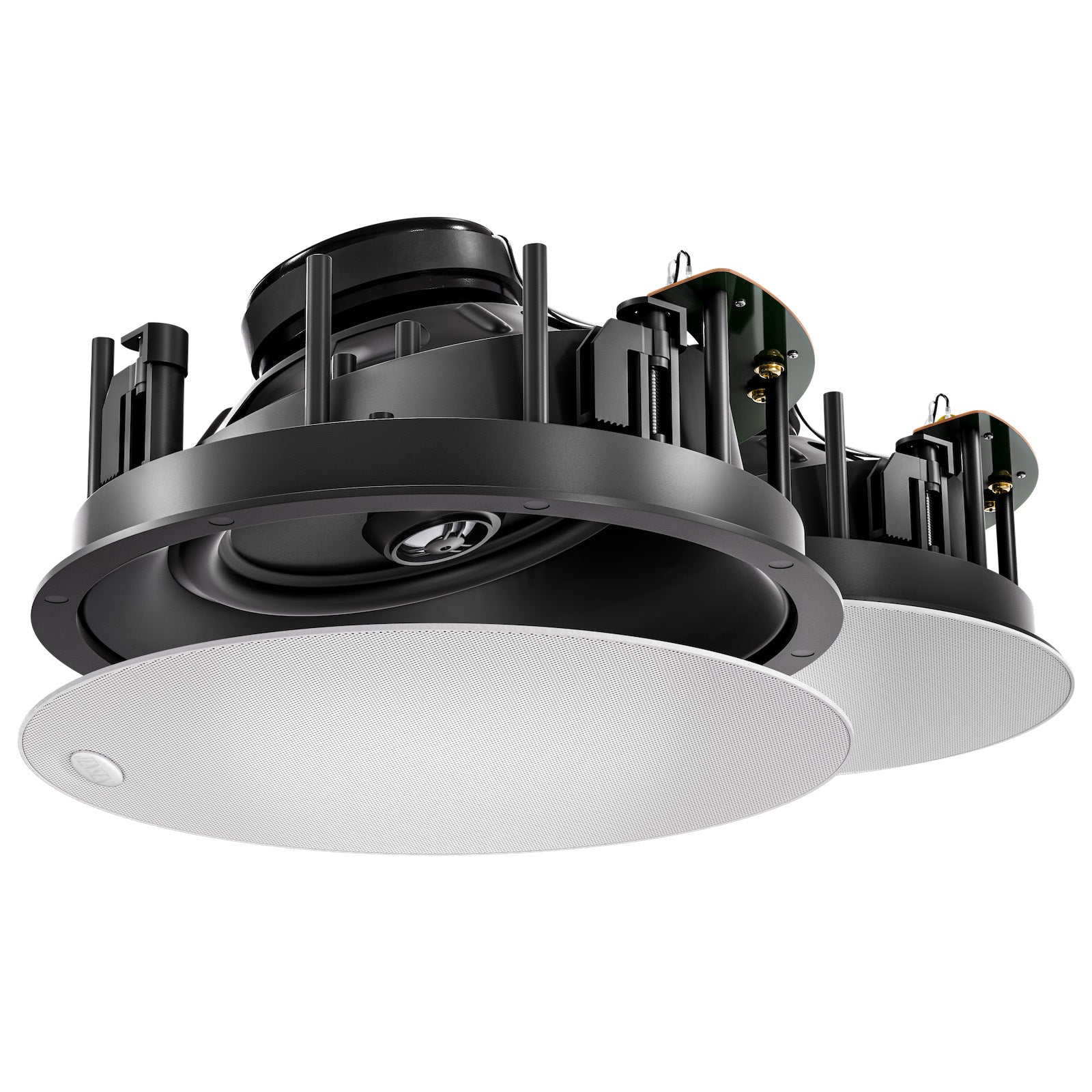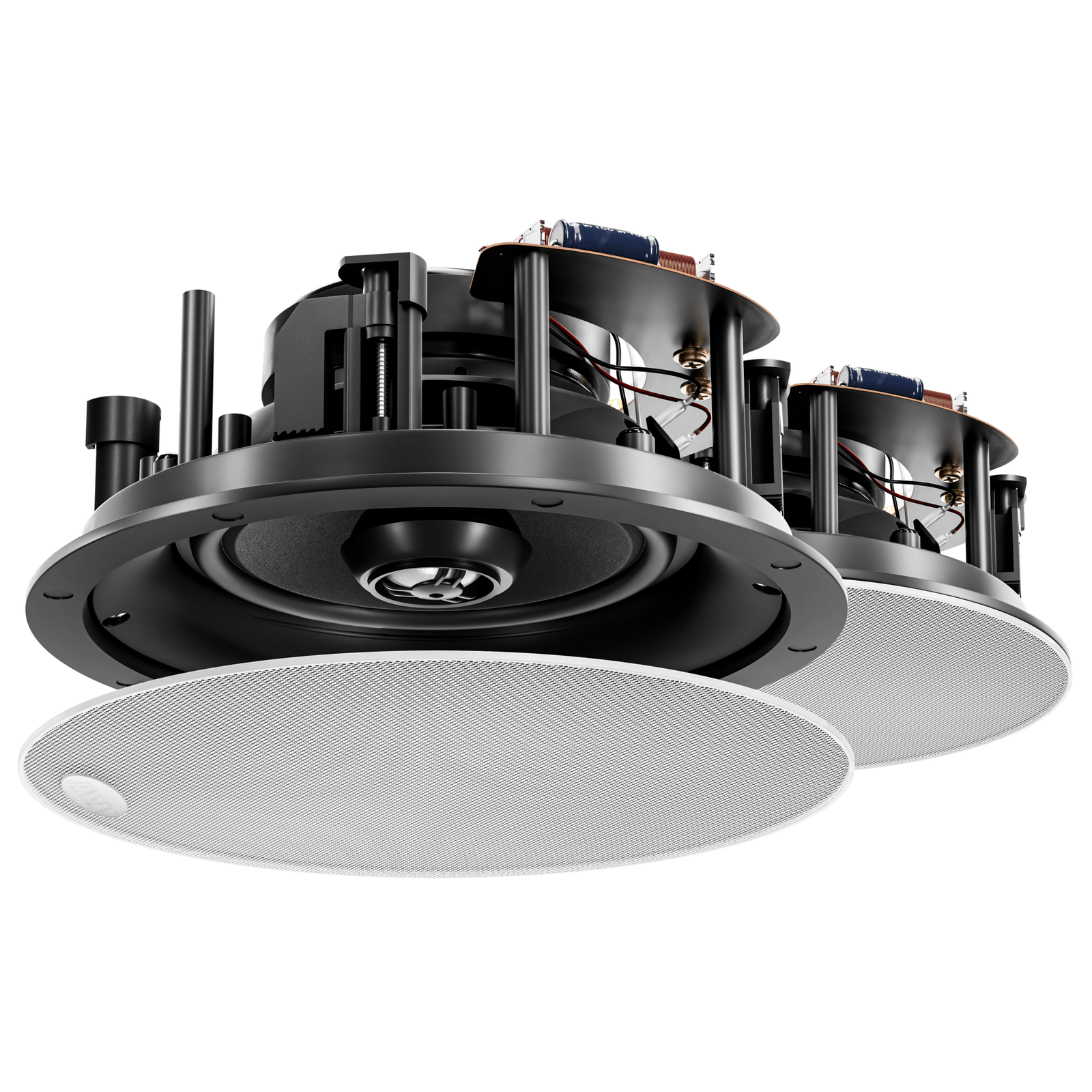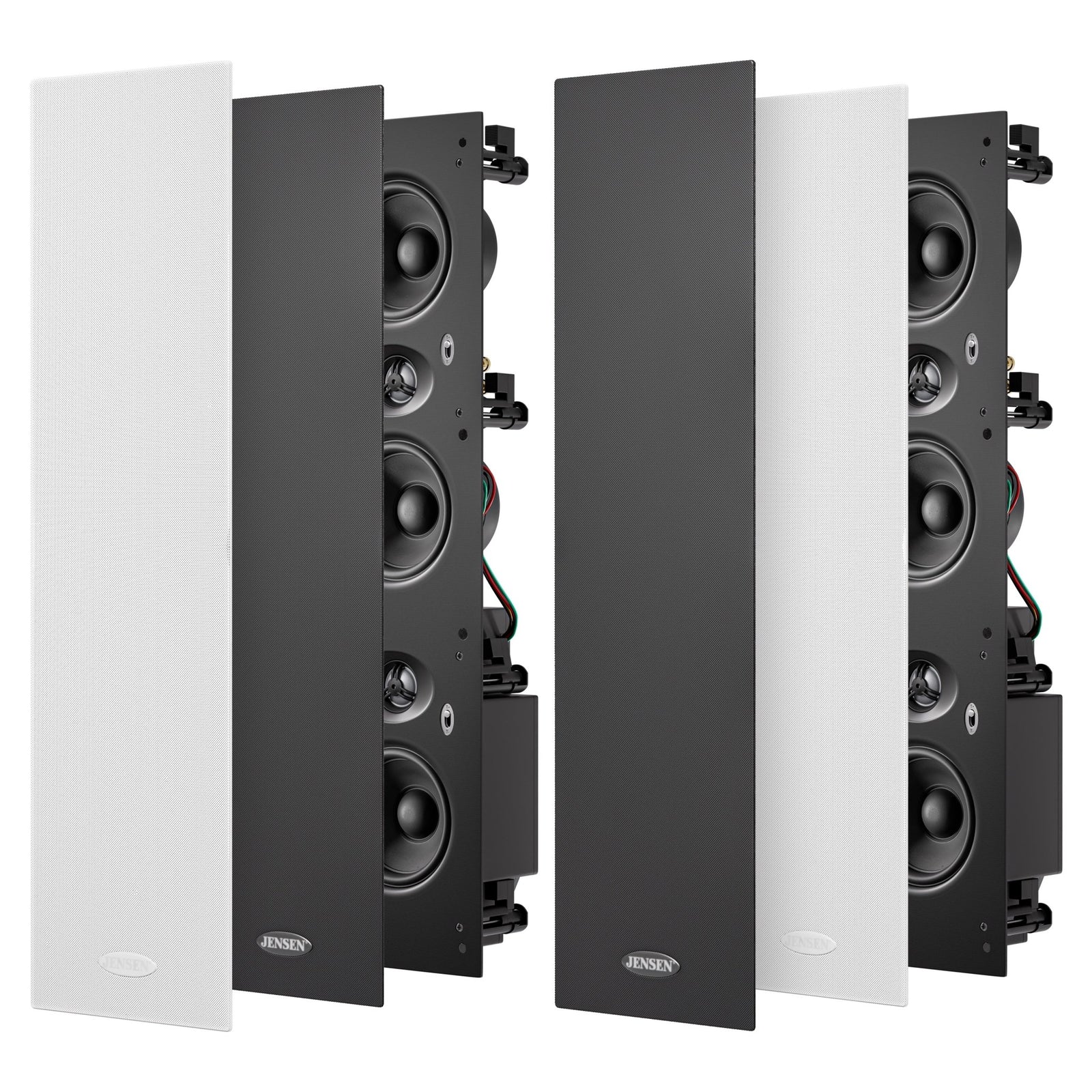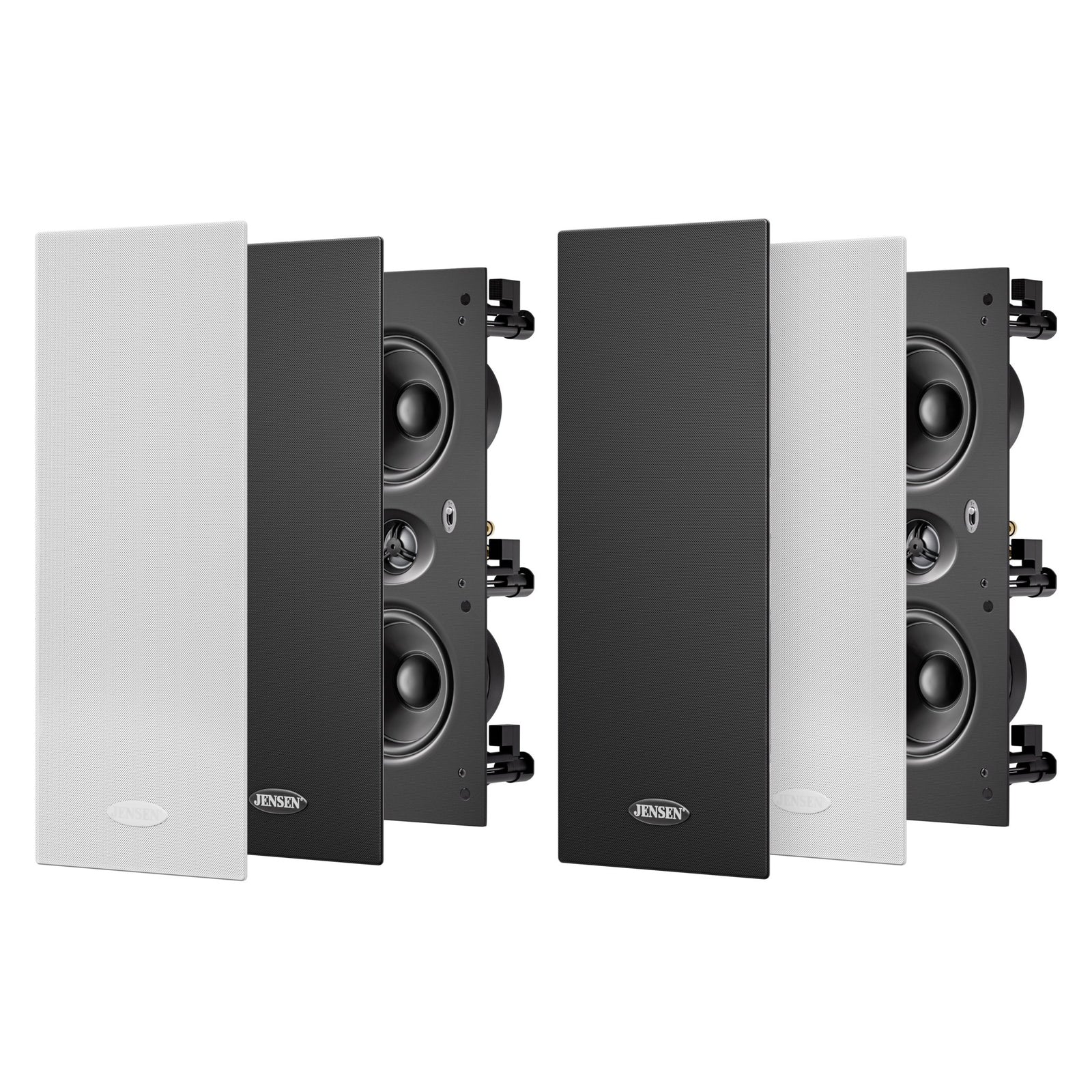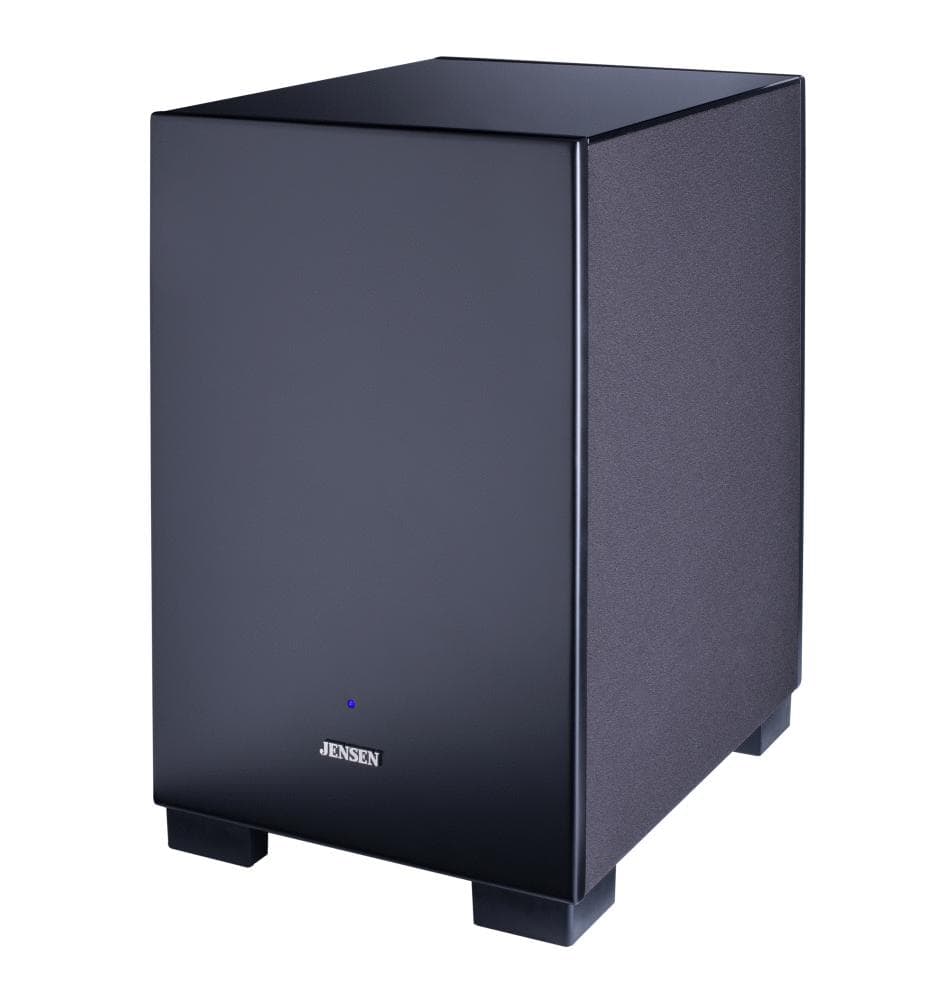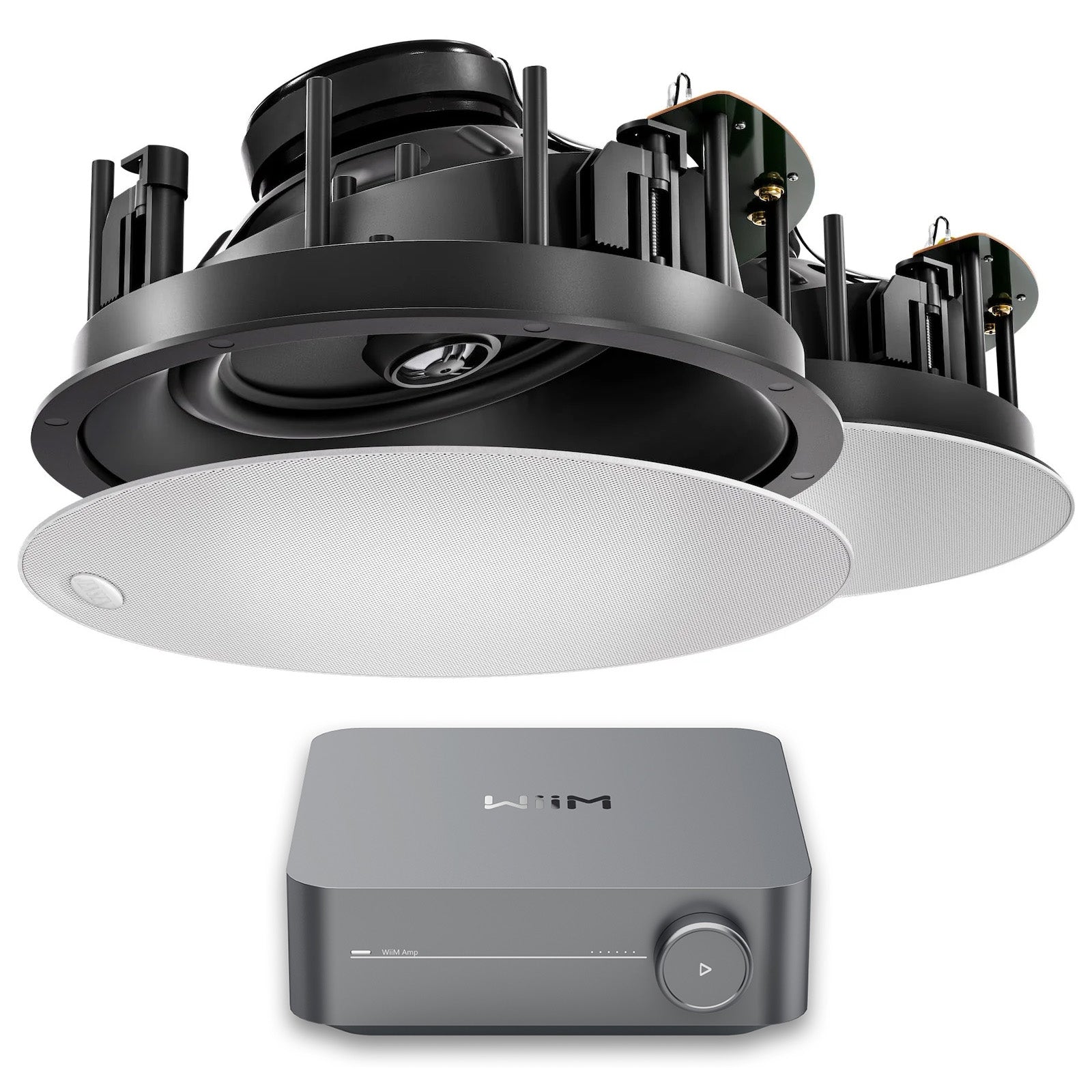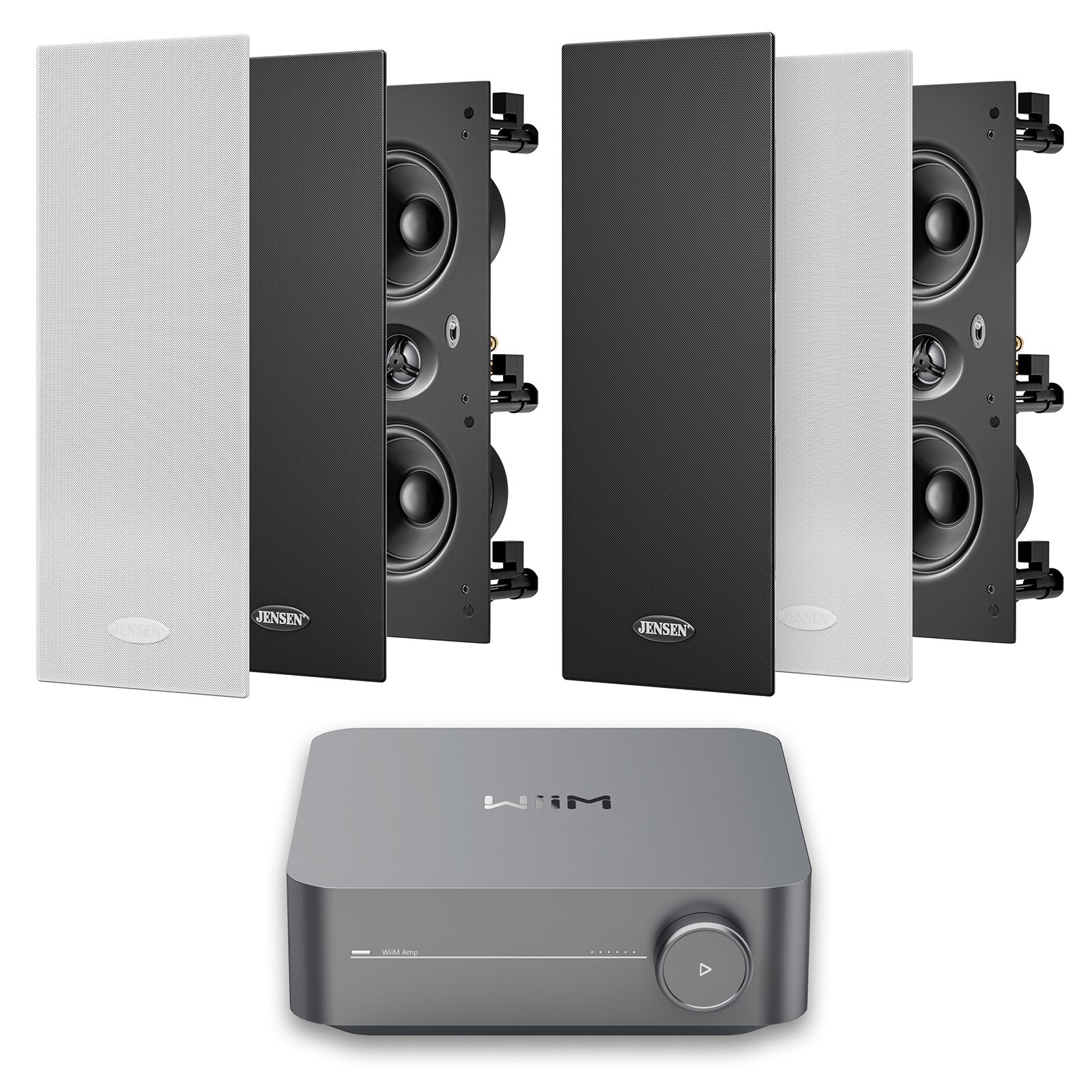HOW MUCH TO SPEND ON YOUR HOME THEATRE

If you’re planning a new home theatre system, and you’re not quite sure how much you should spend for the best value, this is for you.
We’re going to look at:
- The questions you should be asking yourself up front…
- A range breakdown of quality vs. cost…
- How to budget for audio vs. visual equipment, and…
- What your next steps should be.
Let's get into it!
Contents
- How To Approach Budgeting For Home Theatre
- Budget Range Breakdown
- Next Steps In Planning Your Home Theatre
How To Approach Budgeting For Home Theatre

A home theatre system could cost as much as you want. Or you could find a dusty 5.1 on the side of the road for free. Obviously there’s a range.
So before you even get started, you need to answer a few questions.
Should you get a soundbar?
This is a common question so I’ll address it up front.
Soundbars have upsides to them. But they also have big downsides, when compared to separate speakers.
If you want good audio performance for your home theatre and you want it to be tidy, you’ll be much happier with in-wall or in-ceiling speakers. The quality comparison is no contest.
You can learn more about Soundbars vs. alternatives here.
Which “performance to budget” level do you want?
Remember — we’re talking about home theatre here. That means TV, electronics, multiple speakers for surround sound, etc. This doesn’t apply to two-channel stereo systems (best for music only).
Now that we’re clear on that, there are four that suit most people.
Note: Next to each budget level is a ratio X:Y showing visual system cost (X) to audio system cost (Y). 1:1 is spending the same on each. 1:2 is spending twice the amount on audio. Etc.
1. Cheap (1:<1)
This means “spend as little as possible” and *try* to find decent performance at the same time. Often this budget level means someone just wants better sound than the TV speakers they have now.
From a lot of experience in this industry, I strongly recommend avoiding this range altogether. If you like listening to music or watching movies and you have the urge to look at systems — it means you crave a better experience.
If that’s the case… be patient and save up. Get a decent system. The performance jump is more than the price jump. You’ll enjoy it so much more and it will last a lotlonger.
Also, when it comes to surround sound, a cheap system will only simulate surround sound — it won’t produce a quality audio image.
2. Good (1:1 - 1:2)
The majority of products cheaper than this are designed for budget. So cheap materials have been used and corners have been cut during design.
But in this Good Value range you’ll find products designed for performance at value.
This is the price range where you start to find deeper and tighter bass (not shallow and boomy like cheap subs). You find human voices are more realistic and audible, even at lower volumes. You find durable components that will be with you for a while. You’ll get smart screens that respond faster and don’t lag or misbehave.
This is where I recommend you look if you’re very price sensitive.
When it comes to surround sound, Good is a level that will give you a realistic surround experience.
3. Great (1:3 - 1:4)
This range is where you start to get amazing performance.
Upping the quality of the screen will rapidly start to add to the budget (more below). This might also mean adding Atmos speakers to the main room, and maybe an alfresco system outside.
But making those upgrades within this price range will give you big, noticeable improvements.
This price range is where I recommend you plan if you’re really after performance, and just being mindful of budget.
As far as surround sound goes, this budget will leave you with a full “sphere” of audio imaging. You can get panning effects from all sides.
4. Lux (1:5+)
This is where the home theatre companies polish things up.
If you want to go beyond high performance and aren’t worried about budget at all, this is where you’ll end up. It’s where you’ll find 10% improvements in different areas, “audiophile” grade sound reproduction and the state-of-the-art, full-sized TV panels.
If you’re interested in this range, I won’t deter you. But this is where price jumps get bigger and performance jumps get much smaller.
Also, if you’re reading this you’re probably not in that budget range.
Which “part” of your home theatre system is most important to YOU?
Biggest screen? Movies, music or games? Multi-room control? Audio clarity? Powerful bass?
Up front, you should have a vision of what you’re going to do with the system and what you look forward to having most. That should guide your decision making when it comes to budget.
That said… consider that a home theatre system in the “good value” or “great value” ranges discussed will cover most features. You really end up with a question of…
…audio vs. video.
Video may easily be your go-to choice and, if so that’s where you should start.
But consider that your sense of place and immersion will be more impacted by a quality audio system. Your emotions will respond with greater depth to rich harmonies and realistic explosions through audio. Bass is something you feel as much as hear.
It’s worth having a quality screen but I do recommend budgeting for your audio system first. Anywhere from equal budget for audio and video systems on up to triple the budget for audio that you have for video.

Another reason for this is that TV screens live on average 5 years. Quality speakers should last much longer… our Jensen range of speakers live 15+ years. We even have some 30 year old systems in client homes still going strong.
Budget Breakdown Range

Assuming you want to stick with the Good Value and Great Value ranges above, let’s look at some considerations and examples.
Smart TV budget breakdown
When shopping for TV screens, you’re likely to end up confused and overwhelmed. That’s because there are so many of them. So a really great place to start with TVs specifically is understanding the current four types:
LED >> Full Array LED >> QLED >> OLED
Those are in order of visual quality and relative cost.
There are many names manufacturers may use for these, but the technologies are the same. Any screen should be one of these four (until the next invention).
Each step up the ladder is a better technology for visual performance.
That doesn’t tell you about the processing speed or operating system of the smart functions.
So another thing to remember is: Always buy from a brand with a track-record for quality!
You also need to think about screen size.
This is an enormous factor in price. If you want it to be huge, go nuts. 65-inch screens and up are almost always pricey and may not be worth it. That’s because your room size really matters.
How far away the screen is changes how big it should be. Here’s a guideline:

So to sum things up…
Follow that sizing guideline, go with a great brand and choose the screen type that suits your desired performance level.
If you choose to select your screen first and audio system second, you’ll have a benchmark to help budget for the audio. As discussed above, the best way to think about home theatre budgeting is using a ratio of Visual to Audio equipment budgets.
Sound system budget examples
Home theatre sound systems consist of speakers, electronics (like an AV receiver and other media players) and accessories.
Accessories are where you want to aim for value, not cheapness.
Many people recommend going cheap because it doesn’t matter — this isn’t true. I can tell you first hand. I’ve seen $15 HDMI cables fail many times. It’s something you’d never check when troubleshooting a home theatre system… until you see it yourself.
But you do NOT need to spill for the colorful “high end” cables either. Have a look at what’s available and jump one price tier up from the very bottom. Speaker wire on the other hand will depend on how much you need. (Learn more about speaker wire here.)
Your media source may be covered by default.
If you have a collection of Blu-ray discs and you just can’t say goodbye to them, you’ll need a Blu-ray player. The same goes for a record player.
But this is something you can skip entirely and, regardless of budget I recommend you do. AV receivers almost all have WiFi streaming built into them. Between those and your smart TV, you’ll be able to access more music and movies than you can ever consume.
And it’ll be unbelievably easy to use, all from your mobile devices.
Another important budget consideration: Add things gradually!
My suggestion is to get high-quality, performance gear. Especially with your audio system, which will deliver more to the experience.
That’s why it’s also important to know — if your budget is not flexible and you don’t have a lot to spend today — that you can start with the major stuff and add to it later.
It’s so much better to get good stuff gradually than everything cheap at once. That might mean starting with an AV receiver and a set of awesome sounding front speakers (left, right and centre channels). That is bang for your buck. Then you add the surround sound speakers, subwoofer, Atmos, and extra zones when you’re ready.
Budget your audio system in relative to your visual system.
As mentioned above, you should budget based on a ratio of Audio to Visual equipment. Since the audio system adds more emotional and excitement to the home theatre experience, you’ll want to lean this ratio in favor of the audio budget.
Aim for a 1:3 ratio of visual budget to audio budget. (I.e. look to spend three times the amount of audio than on visual.)
What are some examples of audio systems?
Below are some audio system examples using in-wall and in-ceiling speakers from our range. You can view the range here.
This will give you a sense of everything you need to include in your audio system purchase:
- Standard Jensen entry-level home theatre system
3-channel in-wall front speakers; good 5 channel receiver; in-wall or in-ceiling surround speakers; cables - Budget conscious starter kit
3-channel in-wall front speakers; good 5 channel receiver; no surrounds yet; cables - Performance Jensen home theatre system
In-wall 5.1 system; quality subwoofer; Atmos in-ceiling speakers; cables - “Full service” Jensen home theatre
Same as “Performance” system above but add a second music zone to the home
Thanks for reading! If you have any other questions, contact us here.
To learn more, check out these related articles…
5 Reasons To Go In-wall Or In-ceiling For Your Next Home Theatre
What AV Receiver Should I Buy For Home Theatre?
The Best Audio System For Your New Home
